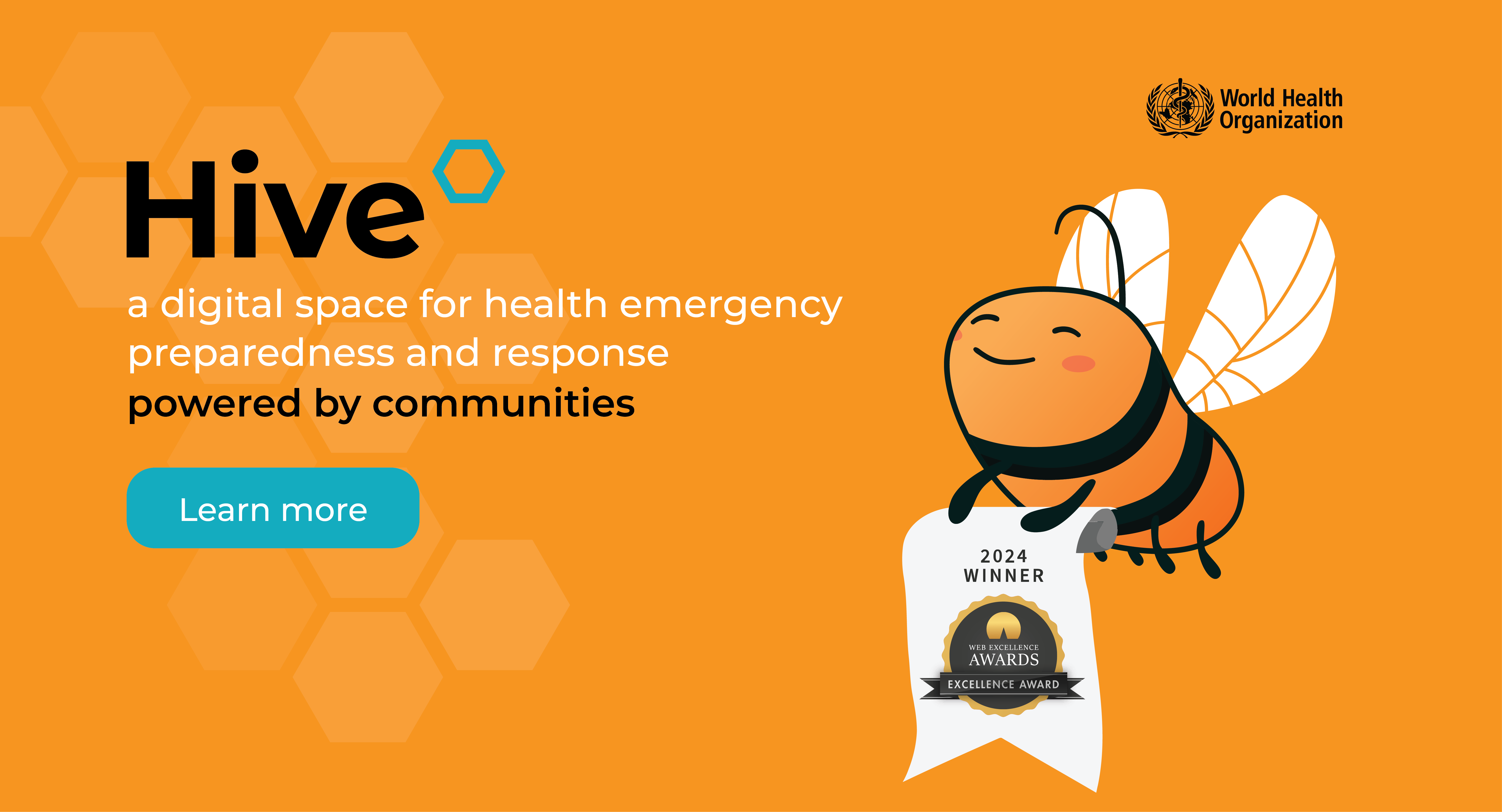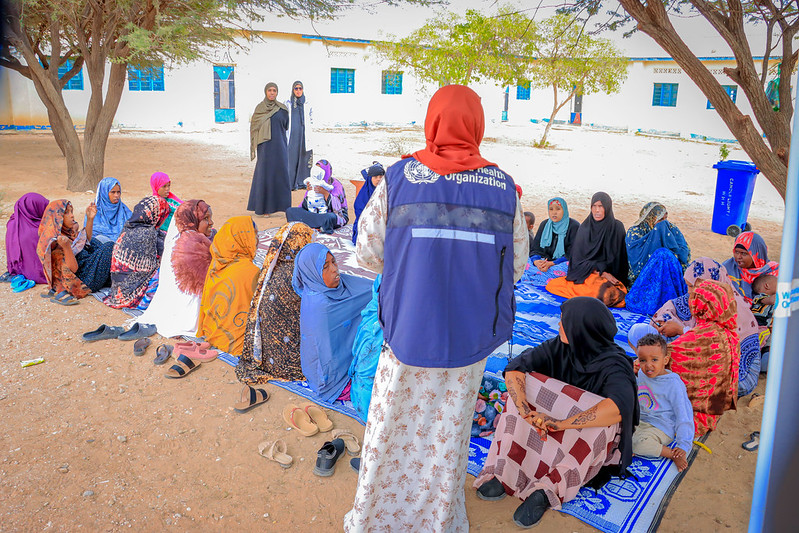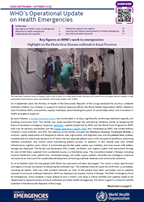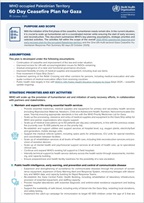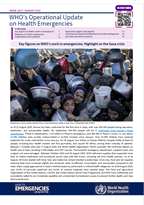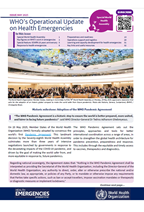WHO is supporting COVID-19 preparedness and response for vulnerable Rohingya refugees and host communities in Cox’s Bazar, Bangladesh.
Strengthening community protection and resilience for health emergencies
The Community Protection and Resilience (CPR) Unit supports countries and partners in building community resilience and safeguarding public health before, during, and after emergencies. By leveraging WHO’s expertise, it provides technical guidance to reduce health risks and ensure effective, community-centered emergency response. The unit works closely with governments, partners, and local communities to develop sustainable, community-led solutions tailored to diverse needs and contexts. A key focus of the CPR Unit is fostering a community-centered approach to health emergencies, ensuring that local voices and priorities shape preparedness and response efforts.
Through risk communication, community engagement, and infodemic management, the unit empowers communities with accessible, evidence-based information, enabling them to make informed decisions that protect their health.
Through evidence-based guidance and tools, capacity building, and the reinforcement of preparedness and response systems, the unit is supporting countries and partners in strengthening the capacity of the community health workforce and integrating service delivery into primary health care.
The CPR Unit strengthens the evidence base for Public Health and Social Measures (PHSM) effectiveness and impact, supporting governments in making risk-based, evidence-informed, and community-centered decisions that maximize public health benefits while minimizing unintended health and socioeconomic consequences. Through its normative leadership and country support, the unit helps protect livelihoods, ensure business continuity, and maintain access to education during emergencies.
By integrating community knowledge with scientific evidence, the CPR Unit promotes equitable, inclusive health emergency programs that address the unique vulnerabilities of different populations. It supports context-specific, data-driven decision-making that balances public health priorities with social and economic well-being.
Through this approach, the Community Protection and Resilience Unit ensures that communities are at the center of emergency preparedness and response, fostering resilience and empowering local actors to take an active role in protecting their health.


/country-readiness-strengthening-(crs)/community-readiness-and-resilience-(crr)/community-protection-newsletter-march-2025_2.jpg?sfvrsn=9c328b33_3)
/country-readiness-strengthening-(crs)/community-readiness-and-resilience-(crr)/rcce-newsletter-february-2025.jpg?sfvrsn=f3707c8b_2)
/country-readiness-strengthening-(crs)/community-readiness-and-resilience-(crr)/news-flash-2025-01-30.png?sfvrsn=dd0c43b5_6)
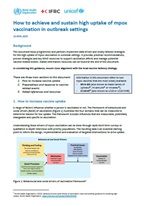
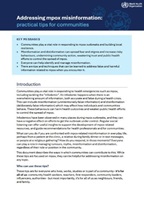
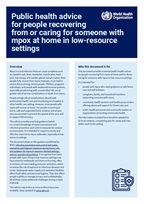
/epidemic-and-pandemic-preparedness-and-prevention-(epp)/emerging-diseases-and-zoonoses-(ezd)/rcce.tmb-144v.png?sfvrsn=f1f0776a_2)
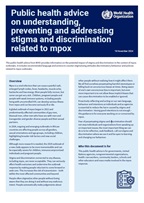
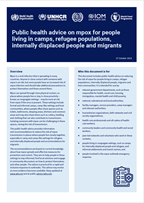
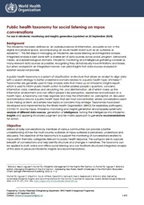
/country-readiness-strengthening-(crs)/community-readiness-and-resilience-(crr)/public-health-advice-for-sex-workers-on-mpoxf64adaa9-204c-4b2d-91cd-84c19a58f985.tmb-144v.png?sfvrsn=88ff1b6e_3)
/country-readiness-strengthening-(crs)/community-readiness-and-resilience-(crr)/community-protection-newsletter026c85eb3f2f49e7b424df25fadbb28d.jpg?sfvrsn=e243cc81_2)
/country-readiness-strengthening-(crs)/community-readiness-and-resilience-(crr)/rcce-newsletter-cover.jpg?sfvrsn=c508d0e6_3)
/country-readiness-strengthening-(crs)/community-readiness-and-resilience-(crr)/capture.jpg?sfvrsn=4a65cd8f_2)
/country-readiness-strengthening-(crs)/community-readiness-and-resilience-(crr)/900.jpg?sfvrsn=721f052_2)
/country-readiness-strengthening-(crs)/community-readiness-and-resilience-(crr)/ncd-kit-in-emergencies.jpg?sfvrsn=2a250be7_2)


